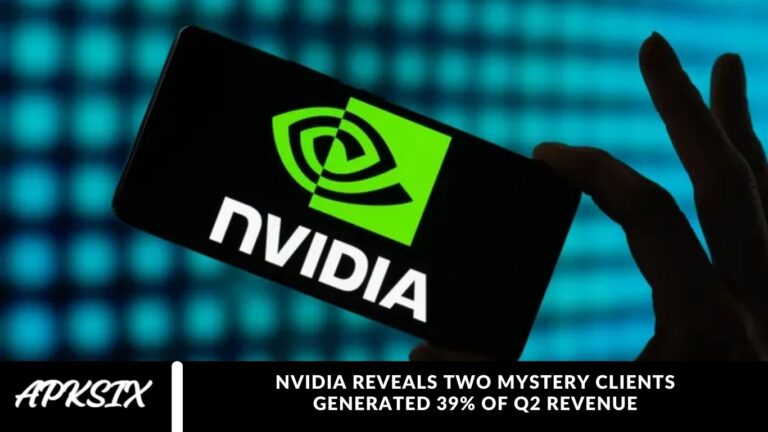Nvidia disclosed that nearly 40% of its second-quarter revenue came from just two unnamed customers, according to a recent filing with the Securities and Exchange Commission (SEC).
The chipmaker reported record quarterly revenue of $46.7 billion for the period ending July 27, marking a 56% year-over-year increase, largely fueled by the ongoing AI data center boom. However, the SEC filing reveals that a significant portion of this growth is concentrated among just a few customers.
Two Customers Account for Major Revenue Share
Nvidia identified the two key contributors in the filing as “Customer A” and “Customer B.” Specifically:
- Customer A generated 23% of total Q2 revenue.
- Customer B contributed 16% of Q2 revenue.
During the first half of the fiscal year, Customer A and Customer B accounted for 20% and 15% of total revenue, respectively. Additionally, four other major clients represented 14%, 11%, 11%, and 10% of Q2 revenue.
Direct vs. Indirect Customers Explained
The SEC filing clarifies that these figures represent direct customers, such as original equipment manufacturers (OEMs), system integrators, or distributors purchasing chips directly from Nvidia. Indirect buyers—like cloud service providers or consumer internet companies—acquire Nvidia products through these direct customers.
This distinction suggests that major cloud providers such as Microsoft, Amazon, Google, or Oracle are unlikely to be the mystery customers directly. However, they may still indirectly drive substantial Nvidia sales.
Impact of Cloud Service Providers
Nvidia’s Chief Financial Officer, Nicole Kress, highlighted that large cloud service providers accounted for 50% of Nvidia’s data center revenue, which itself represented 88% of the company’s total revenue, according to CNBC. This underscores how pivotal AI-driven cloud demand remains for Nvidia financial performance.
Credit analyst Dave Novosel told Fortune that although the high concentration of revenue among just a few customers poses a potential risk, the outlook remains strong. He noted that these clients hold substantial cash reserves, generate significant free cash flow, and are expected to continue heavy spending on data centers in the coming years, which could support Nvidia’s sustained growth.
Frequently Asked Questions
How much of Nvidia’s Q2 revenue came from two mystery clients?
Nearly 39% of Nvidia’s Q2 revenue came from two unnamed clients, according to the company’s SEC filing.
Who are Nvidia’s mystery customers?
The SEC filing does not reveal the identities of these customers, referring to them only as Customer A and Customer B.
Why is Nvidia’s revenue concentrated among a few customers?
A large portion of Nvidia’s revenue comes from direct sales to major OEMs, system integrators, and distributors, which are concentrated customers purchasing high volumes of chips.
Could the mystery customers be big cloud providers?
It’s unlikely they are direct cloud providers like Microsoft Amazon, Google, or Oracle, but these companies may influence Nvidia’s revenue indirectly through data center purchases.
How did Nvidia perform overall in Q2?
Nvidia reported record Q2 revenue of $46.7 billion, a 56% year-over-year increase, driven largely by the AI data center boom.
How much did Customer A and Customer B contribute individually?
Customer A accounted for 23% of Q2 revenue, while Customer B contributed 16%, totaling 39% combined.
What portion of Nvidia’s revenue comes from cloud service providers?
According to CFO Nicole Kress, large cloud service providers represent 50% of Nvidia’s data center revenue, which is 88% of total company revenue.
Conclusion
Nvidia’s disclosure that two mystery clients accounted for 39% of Q2 revenue highlights both the company’s impressive growth and the concentration risk inherent in its business model. While reliance on a few major customers could pose potential challenges, these clients are financially strong and expected to continue heavy spending on AI-driven data centers. Coupled with Nvidia’s record-breaking $46.7 billion quarterly revenue and the ongoing demand for AI and cloud technologies, the company appears well-positioned for sustained growth. Investors and industry watchers will be closely monitoring how Nvidia balances its reliance on key customers while expanding its broader market footprint.

